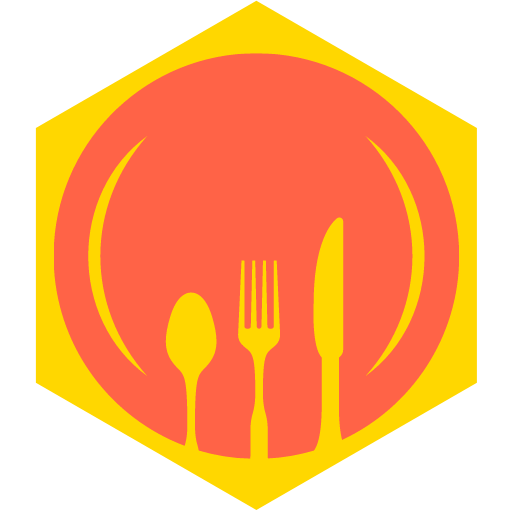Originally posted on June 26, 2025 @ 8:54 pm
Menu design in America has evolved into a sophisticated blend of art, psychology, and marketing strategy. Beyond simply listing dishes and prices, menus serve as vital communication tools that influence customer choices and dining experiences.
The design of a menu can significantly impact a restaurant’s success by guiding patrons toward high-profit items, conveying the establishment’s personality, and enhancing overall satisfaction. In a competitive market, restaurateurs and designers continuously refine menus to balance aesthetic appeal with functionality, aiming to capture attention and drive sales simultaneously.
The history of menu design reflects broader cultural and economic shifts, mirroring changing consumer tastes and technological advancements. From hand-written chalkboards to digital interactive menus, the way menus are crafted and presented reveals much about American dining trends.
Understanding the nuances of effective menu design requires exploring typography, layout, color psychology, and even the strategic placement of dishes. Each element plays a role in creating an engaging and memorable dining journey for guests.
Ultimately, the art of menu design in America is a dynamic field that blends creativity with data-driven insights. Successful menus not only display options but also tell a story, invite exploration, and subtly persuade.
As restaurants adapt to new challenges such as online ordering and dietary trends, menu design continues to be a crucial factor in shaping the modern American dining landscape.
The Evolution of Menu Design in America
American menu design has undergone significant transformations since its inception, heavily influenced by cultural and technological changes. Early menus were simple and functional, but over time, aesthetics and strategic layout became paramount.
This section explores the historical trajectory of menu design, highlighting key developments that have shaped modern practices.
In the 19th century, menus were often handwritten or printed on plain paper, serving primarily as a practical list of offerings. As dining out became more popular, menus began to reflect the establishment’s identity, with more ornate fonts and decorative elements.
The rise of the diner and casual eateries introduced standardized formats that prioritized clarity and simplicity.
The mid-20th century saw the introduction of color printing and glossy finishes, which allowed restaurateurs to experiment with visual appeal. This era also marked the beginning of menu psychology, where design choices started to focus on nudging customer behavior towards higher-margin items.
The digital revolution further transformed menus, adding interactive and customizable elements that cater to diverse dietary preferences.
Key Milestones in Menu Design History
- 1800s: Handwritten menus with limited decoration, focused on functionality.
- Early 1900s: Introduction of printed menus with more detailed descriptions and stylized fonts.
- 1950s-70s: Use of color and photography, emergence of menu psychology techniques.
- 2000s: Digital and online menus become prevalent, offering interactive experiences.
“A well-crafted menu is the silent salesperson of any restaurant, guiding patrons through a culinary journey without uttering a word.” – Culinary Design Expert
Psychology Behind Menu Layouts
Menu layout psychology applies cognitive science principles to influence diners’ decisions subtly. Understanding how customers read and process information helps designers create menus that maximize profitability while enhancing user experience.
This section delves into the psychological strategies used in American menu design.
Research shows that guests tend to focus on certain “sweet spots” on a menu, such as the top right corner or the center of the page. Designers exploit this tendency by placing high-profit or signature items in these areas.
Moreover, the use of visual cues such as boxes, borders, and icons can draw attention to specific dishes, guiding customers toward preferred options.
Another psychological principle involves limiting choices to reduce decision fatigue. Overly extensive menus can overwhelm diners, leading to dissatisfaction or slower ordering times.
Effective menu design balances variety with clarity, presenting a curated selection that caters to different tastes without causing confusion.
Common Psychological Techniques
- Eye Movement Patterns: Positioning key items where customers naturally look first.
- Anchoring: Using high-priced items to make other offerings seem more reasonable.
- Decoy Pricing: Introducing a less attractive option to steer choices towards targeted dishes.
- Limited Choices: Reducing options to streamline decision-making and encourage faster ordering.
“Menu design is less about what you say and more about where you say it. Strategic placement is everything.” – Behavioral Economist
Typography and Color in American Menus
Typography and color are fundamental elements that communicate a restaurant’s brand and influence diners’ perceptions. The right combination can evoke emotions, suggest quality, and enhance readability.
This section examines how American menus utilize fonts and colors to create distinct atmospheres and direct customer responses.
Typography choices can vary from elegant scripts in fine dining establishments to bold, playful fonts in casual eateries. The font style not only reflects the restaurant’s personality but also impacts legibility.
Sans-serif fonts are often favored for their clarity, especially in fast-casual settings, while serif fonts convey tradition and sophistication.
Color psychology plays a pivotal role in menu design. Warm colors like red and orange can stimulate appetite and excitement, whereas cool colors such as blue and green often communicate calmness and health-consciousness.
Additionally, contrast between background and text ensures menus are easy to read under different lighting conditions.
Examples of Typography and Color Usage
| Restaurant Type | Typography | Color Palette | Effect |
| Fine Dining | Elegant serif fonts | Dark hues, gold accents | Conveys luxury and exclusivity |
| Casual Dining | Friendly sans-serif fonts | Warm reds, oranges | Encourages appetite and comfort |
| Health-Focused | Clean, modern fonts | Greens, blues | Suggests freshness and wellness |
- Consistency in font usage reinforces brand identity.
- Contrasting colors improve readability and highlight key sections.
- Subtle color accents can guide attention without overwhelming.
Menu Engineering and Profit Maximization
Menu engineering is the practice of analyzing and optimizing menu items based on popularity and profitability. American restaurants increasingly rely on data-driven approaches to design menus that maximize revenue.
This section outlines the principles of menu engineering and actionable strategies to boost sales.
Every item on a menu falls into one of four categories: stars (high profit, high popularity), puzzles (high profit, low popularity), plowhorses (low profit, high popularity), and dogs (low profit, low popularity).
Understanding these categories allows restaurateurs to adjust pricing, placement, and descriptions to enhance performance.
For example, placing star items prominently and using descriptive language can increase their sales further. Puzzles may require marketing efforts or recipe adjustments to improve appeal, while dogs are often removed or reimagined.
This systematic approach ensures that menus not only satisfy customers but also contribute to the bottom line.
Menu Item Classification Table
| Category | Profitability | Popularity | Strategy |
| Stars | High | High | Highlight and promote aggressively |
| Puzzles | High | Low | Improve appeal or reposition |
| Plowhorses | Low | High | Consider price adjustments or portion control |
| Dogs | Low | Low | Remove or rework |
- Descriptive language increases perceived value and encourages upselling.
- Visual emphasis on star items guides customers to profitable choices.
- Regular menu analysis helps keep offerings aligned with business goals.
“Menu engineering transforms a simple list into a powerful tool for profitability and customer satisfaction.” – Restaurant Consultant
Technological Innovations in Menu Design
Technology has revolutionized menu design in America, introducing new formats and interactive experiences. From QR codes to tablet ordering systems, digital menus have become integral to modern dining.
This section explores how technology shapes menu presentation and customer interaction.
QR code menus gained popularity during the COVID-19 pandemic, providing contactless access to menus via smartphones. This innovation not only enhanced safety but also allowed for real-time updates and dynamic content like videos or allergy information.
Restaurants can quickly modify offerings without reprinting physical menus.
Tablet menus and kiosks further elevate interactivity by enabling customization and upselling through suggestive prompts. These platforms collect valuable data on ordering patterns, helping businesses refine menu design and inventory management.
Additionally, integration with online ordering apps extends the menu’s reach beyond the physical restaurant.
Advantages of Digital Menus
- Dynamic updates: Instant changes to pricing and availability.
- Enhanced visuals: High-quality images and videos to entice customers.
- Customization: Options for dietary preferences and meal modifications.
- Data analytics: Insights into customer preferences and behavior.
“Digital menus are not just a convenience; they are a strategic asset that transforms how restaurants engage with their customers.” – Tech Innovator in Hospitality
Menu Design Trends Reflecting American Culture
Menus in America often mirror larger cultural movements and societal values. As diners increasingly seek authenticity, sustainability, and inclusivity, menu designs adapt to reflect these priorities.
This section examines contemporary trends in American menu design that resonate with evolving consumer expectations.
One prominent trend is the emphasis on transparency, with menus clearly indicating ingredient sources, allergen information, and dietary classifications such as vegan or gluten-free. This openness builds trust and caters to health-conscious audiences.
Additionally, many menus highlight local and seasonal ingredients, supporting community farmers and reducing environmental impact.
Another trend is the integration of multicultural influences, showcasing diverse cuisines and fusion dishes. Menus often include stories or cultural context to create a richer dining experience.
Inclusive language and symbols also appear more frequently, ensuring that menus cater to a wide range of customers, including those with dietary restrictions.
Popular Cultural Trends in Menus
- Farm-to-table emphasis on local, fresh ingredients.
- Plant-based options to accommodate vegan and vegetarian lifestyles.
- Allergen-friendly icons making choices easier for sensitive customers.
- Storytelling through menu descriptions that add cultural depth.
| Trend | Menu Feature | Customer Impact |
| Transparency | Ingredient sourcing and allergen info | Builds trust and clarity |
| Sustainability | Seasonal and local food highlights | Appeals to eco-conscious diners |
| Diversity | Multicultural dishes and narratives | Enhances cultural appreciation |
Conclusion
Menu design in America stands at the crossroads of tradition and innovation, blending artistic expression with strategic intent. Over time, menus have evolved from simple listings to powerful tools that shape customer experience and influence restaurant profitability.
The thoughtful combination of layout, typography, color, and psychology ensures that menus do more than inform—they engage and inspire.
Technological advancements continue to redefine how menus are presented and interacted with, offering exciting opportunities for customization and data-driven improvements. Meanwhile, cultural trends emphasize authenticity, inclusivity, and sustainability, driving menus to reflect broader societal values.
Restaurateurs who embrace these multifaceted aspects of menu design position themselves to connect more deeply with customers, enhance satisfaction, and thrive in a competitive market.
Ultimately, the art and science of menu design in America demonstrate that what appears to be a simple list is, in fact, a carefully crafted narrative. It invites diners to embark on a culinary journey that is as much about the story told on the page as the food served at the table.
To succeed, restaurants must continue to innovate, adapt, and listen to the evolving tastes and expectations of their patrons.


